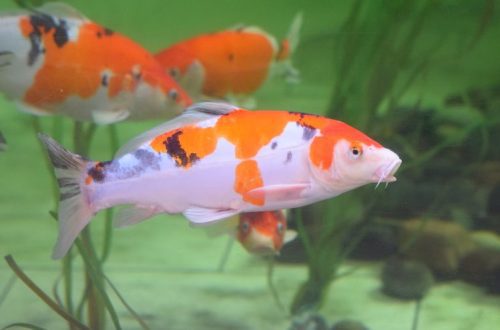
Why does a fish need a TV? A new invention revealed the secrets of pets
It becomes easier to understand the behavior of fish and birds. A new invention helps scientists with this. It is affectionately called “UV TV”. Let’s figure out what it is and what discoveries it has already helped to make.
The University of Queensland has developed a new “television” display. It can do things that none of the standard TV monitors and computer screens can do.
In the devices familiar to us, the image is created by three colors: red, green and blue. And the new displays have five colors, including purple and ultraviolet. Therefore, they allow you to check the ultraviolet vision of pets – that is, the ability to see light waves shorter than 400 nanometers.
If you don’t understand what UV vision is, imagine a world where red became black and smooth became striped. This is how birds, fish, insects and reptiles see. For example, bees use ultraviolet patterns on flowers to locate nectar. And fish can recognize humans by ultraviolet facial patterns.
The new invention is affectionately known as the “UV TV”, but you probably don’t want to buy one and watch Netflix on it. To do this, you will have to wear sunglasses and sunscreen while watching. And the screen resolution is only 8 x 12 pixels in an area of 4 x 5 centimeters.
The UV TV allows you to show dot patterns to test the perception of fish in the Ishihara test for color blindness. “In this test, people read the number hidden in the colored dots. And since the animals do not know the numbers, they are trained to snatch one odd number out of a field of multi-colored dots,” Dr. Samuel Powell from the Marshall Laboratory of the Queensland Brain Institute explained how the display works.
It’s difficult to imagine? Then watch the video of the University of Queensland channel on how the tests with the new “UV TV” developed by the scientists of this university are carried out:
The invention was also useful to researchers from the School of Biological Sciences at the University of California. They studied the vision of the anemone fish or clown fish, also known as Nemo. Unlike humans, she has vision that is sensitive to ultraviolet radiation.
The study found that the white stripes on clownfish also reflect ultraviolet light. Fish use ultraviolet color cues to recognize each other and read signals of dominance.
And this is just the beginning. Research is ongoing. Perhaps, thanks to the UV TV, we will soon learn a lot of interesting things about our beloved pets.





